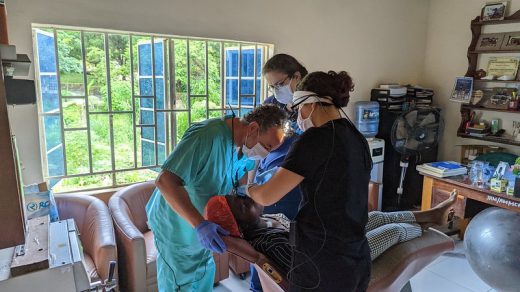There are several reasons men and women of all ages choose to get a facelift. As you get older, you may notice once barely-there fine lines, wrinkles, and sagging skin starting to affect how your face and neck look. Or you may feel young and vibrant at heart, but your face reflects a different story. Whatever the motivation, a facelift helps our Colorado Springs, Denver, and Golden patients refresh their faces and outlook.
While it’s important to do your research and discuss the surgery at length with your plastic surgeon, a few general factors can help indicate whether you’re ready for a facelift. Signs that you might be a good candidate for a facelift include:
1. You’re in Good Physical Health.
As with any surgical procedure, it’s important to have overall good health with no issues such as high blood pressure or bleeding disorders. A facelift usually requires general anesthesia and some trauma to your facial tissue, so being in good physical health is important during the surgery and for a speedy recovery. Lifestyle factors such as smoking, poor diet, and a sedentary lifestyle will impede your recovery and may place you at greater risk for complications.
Read more about how to prepare your body for a surgical procedure in this related blog.
2. You Still Have Some Skin Elasticity.
While candidates with loose and sagging skin in the face and neck area can benefit from a facelift, the skin needs to have a certain amount of elasticity for the procedure to be successful. During the surgery, your plastic surgeon will trim, tighten, and redrape the skin for a lifting effect. For this reason, the health and elasticity of your skin will affect your facelift results.
According to John Hopkins Medicine, this procedure also works best on candidates whose bone structure is strong and well defined. Men and women with symmetrical bone structures usually enjoy excellent results from a facelift.
3. You’re Frustrated by Prominent Facial Wrinkles and Folds.
A traditional facelift is best suited for individuals with pronounced sagging in the jowl, neck, and chin area and deep wrinkles on the lower face. If you have mild to moderate wrinkles, fine lines, or skin laxity, nonsurgical alternatives such as dermal fillers, laser skin resurfacing, or chemical peels can often rejuvenate and refresh your appearance.
However, more pronounced sagging and excess skin around the neck and face, as well as weakened neck muscles, can’t be effectively corrected with nonsurgical treatments. In these cases, a facelift is necessary to tighten these tissues.
Many facelift patients also have other signs of aging, such as sagging eyelids or sun-damaged skin that gives them a rough, blotchy complexion. Often, these issues become even more evident after facelift surgery. That’s why many women and men choose to enhance their facelifts with other procedures such as eyelid surgery or skin resurfacing treatments.
4. You Have Realistic Expectations.
Having reasonable and realistic expectations about your facelift results is an essential part of your recovery. While the procedure will give you a youthful and lifted look to your face and skin, don’t expect to do any time travel back to your 20s! Realistic expectations and a positive mental outlook during any cosmetic procedure are vital to your emotional well-being.
Your plastic surgeon can discuss more factors determining whether you are a good facelift candidate and what you can expect from your results. To learn more about how we can restore your youthful glow, request a consultation or call us at
(303) 278-2600 to schedule an appointment.






